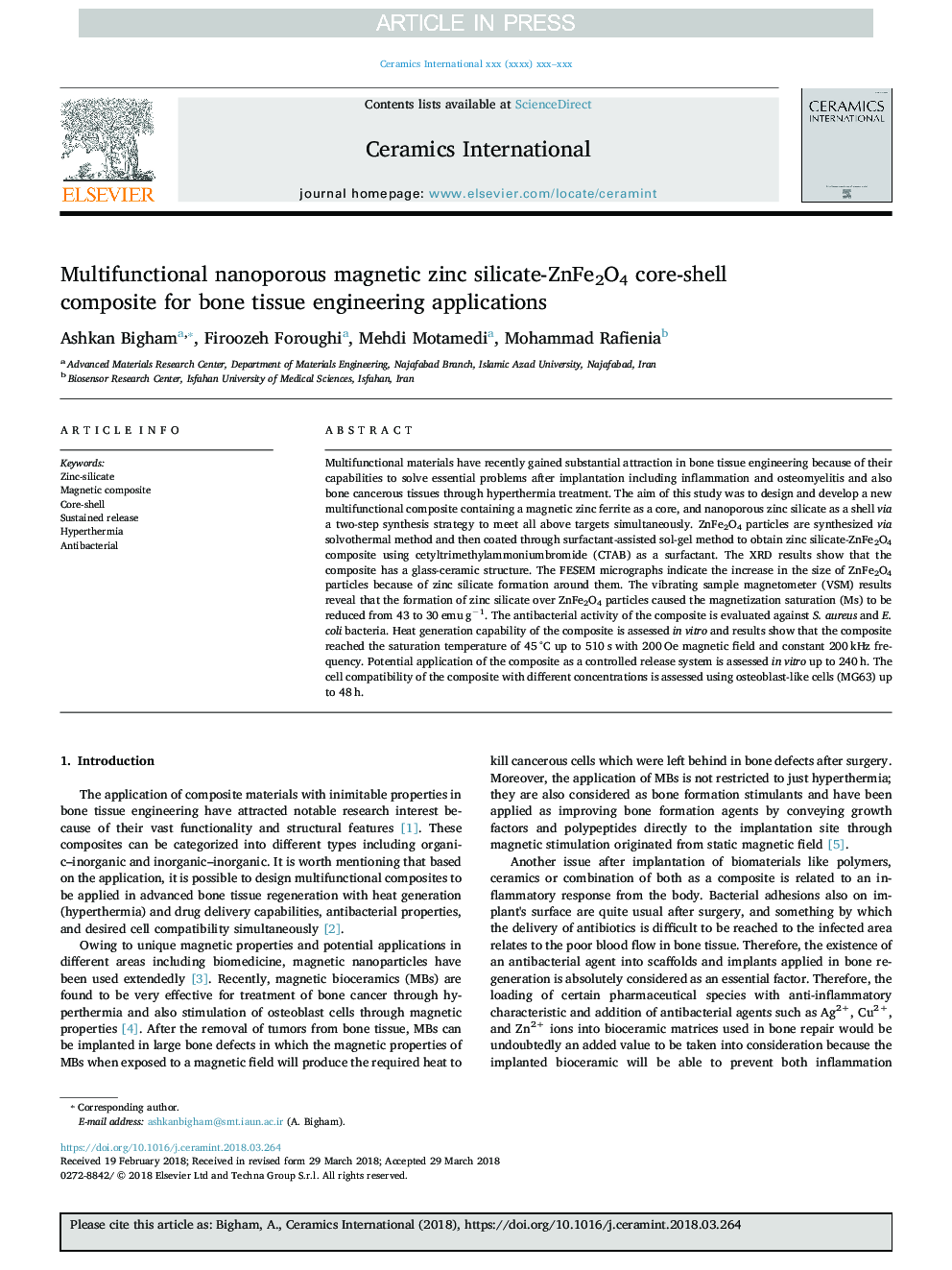| Article ID | Journal | Published Year | Pages | File Type |
|---|---|---|---|---|
| 7887316 | Ceramics International | 2018 | 9 Pages |
Abstract
Multifunctional materials have recently gained substantial attraction in bone tissue engineering because of their capabilities to solve essential problems after implantation including inflammation and osteomyelitis and also bone cancerous tissues through hyperthermia treatment. The aim of this study was to design and develop a new multifunctional composite containing a magnetic zinc ferrite as a core, and nanoporous zinc silicate as a shell via a two-step synthesis strategy to meet all above targets simultaneously. ZnFe2O4 particles are synthesized via solvothermal method and then coated through surfactant-assisted sol-gel method to obtain zinc silicate-ZnFe2O4 composite using cetyltrimethylammoniumbromide (CTAB) as a surfactant. The XRD results show that the composite has a glass-ceramic structure. The FESEM micrographs indicate the increase in the size of ZnFe2O4 particles because of zinc silicate formation around them. The vibrating sample magnetometer (VSM) results reveal that the formation of zinc silicate over ZnFe2O4 particles caused the magnetization saturation (Ms) to be reduced from 43 to 30â¯emuâ¯gâ1. The antibacterial activity of the composite is evaluated against S. aureus and E. coli bacteria. Heat generation capability of the composite is assessed in vitro and results show that the composite reached the saturation temperature of 45â¯Â°C up to 510â¯s with 200â¯Oe magnetic field and constant 200â¯kHz frequency. Potential application of the composite as a controlled release system is assessed in vitro up to 240â¯h. The cell compatibility of the composite with different concentrations is assessed using osteoblast-like cells (MG63) up to 48â¯h.
Related Topics
Physical Sciences and Engineering
Materials Science
Ceramics and Composites
Authors
Ashkan Bigham, Firoozeh Foroughi, Mehdi Motamedi, Mohammad Rafienia,
